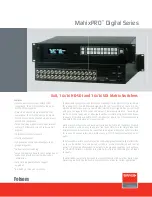
136
Configuring portal authentication
Overview
Portal authentication controls user access to networks. Portal authenticates a user by the username
and password the user enters on a portal authentication page. Therefore, portal authentication is
also known as Web authentication. When portal authentication is deployed on a network, an access
device redirects unauthenticated users to the website provided by a portal Web server. The users
can access the resources on the website without authentication. If the users want to access other
network resources, they must pass authentication on the website.
Portal authentication is classified into the following types:
•
Active
authentication
—Users visit the authentication website provided by the portal Web
server and enter their username and password for authentication.
•
Forced
authentication
—Users are redirected to the portal authentication website for
authentication when they visit other websites.
Portal authentication flexibly imposes access control on the access layer and vital data entries. It has
the following advantages:
•
Allows users to perform authentication through a Web browser without installing client software.
•
Provides ISPs with diversified management choices and extended functions. For example, the
ISPs can place advertisements, provide community services, and publish information on the
authentication page.
•
Supports multiple authentication modes. For example, re-DHCP authentication implements a
flexible address assignment scheme and saves public IP addresses. Cross-subnet
authentication can authenticate users who reside in a different subnet than the access device.
The device supports Portal 1.0, Portal 2.0, and Portal 3.0.
Extended portal functions
By forcing patching and anti-virus policies, extended portal functions help hosts to defend against
viruses. Portal supports the following extended functions:
•
Security
check
—Detects after authentication whether or not a user host installs anti-virus
software, virus definition file, unauthorized software, and operating system patches.
•
Resource access restriction
—Allows an authenticated user to access certain network
resources such as the virus server and the patch server. Users can access more network
resources after passing security check.
Security check must cooperate with the HPE IMC security policy server and the iNode client.
Portal system components
A typical portal system consists of these basic components: authentication client, access device,
portal authentication server, portal Web server, AAA server, and security policy server.
Содержание FlexFabric 5940 SERIES
Страница 251: ...238 ...
















































